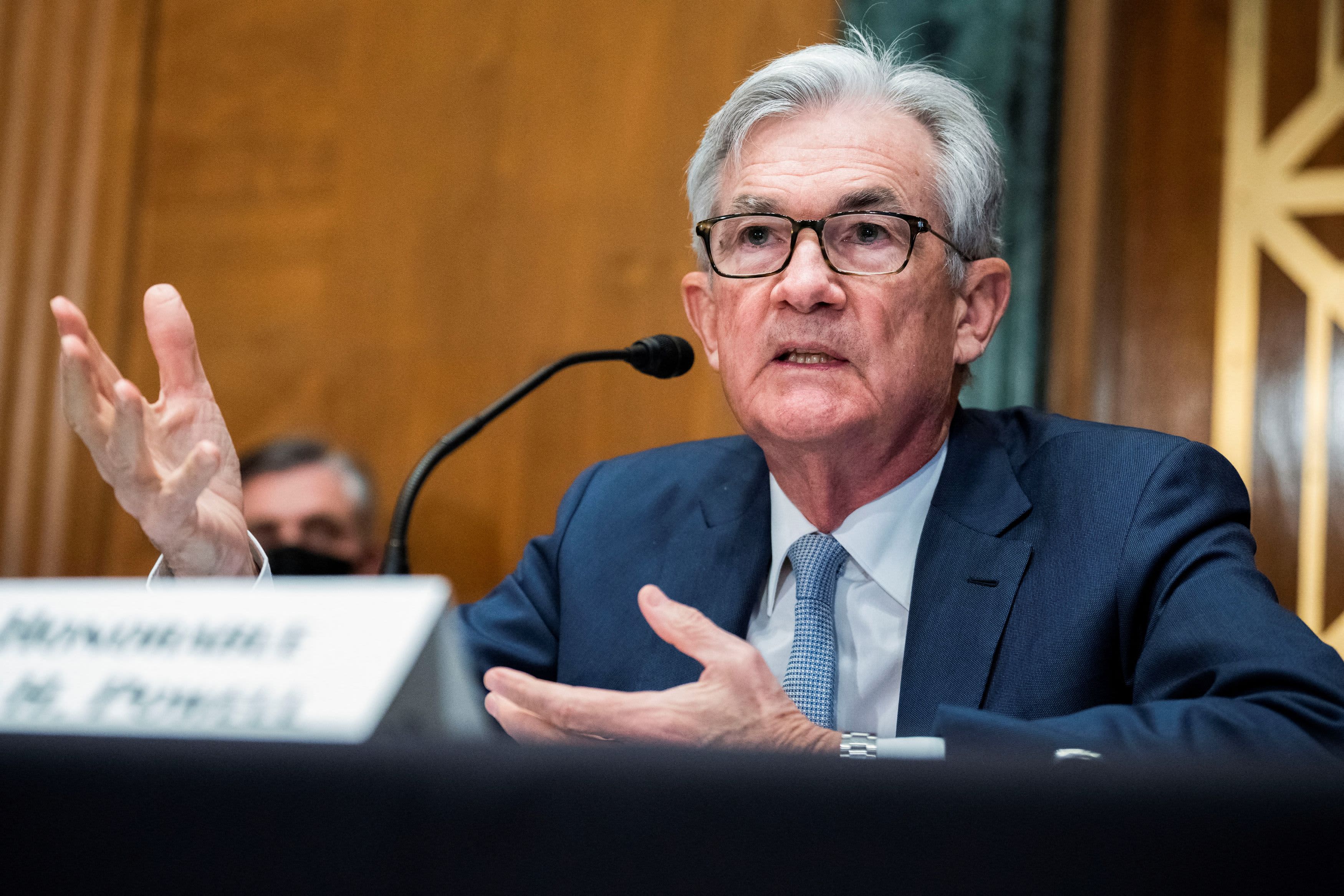Bond yields jumped and stocks were volatile after the Federal Reserve released its forecast for an aggressive series of rate hikes that it expects will bring down inflation swiftly over the next year.
The Fed released its latest forecast for interest rates and the economy, as it raised its target fed funds rate by a quarter point, its first rate hike in more than three years. The Dow Jones Industrial Average and S&P 500 briefly turned negative after the announcement, while bond yields rose.
The major averages teetered during Fed Chair Jerome Powell’s post-meeting press conference, but ultimately jumped. The Dow closed more than 500 points higher in volatile trading.
The 2-year Treasury yield, which most reflects Fed policy, briefly jumped above 2% for the first time since May 2019.
The central bank released its forecast on its so-called “dot plot,” a graphic representation of the views of individual Fed officials. The median forecast for 2022 was for seven hikes in total, and three more were forecast for the following year. None were expected in 2024.
Wall Street economists had expected the Fed would forecast five to six hikes for this year, though the futures market was pricing in seven rate hikes before the announcement.
“The signal from the dots is hawkish. It means they’re willing to sacrifice growth for inflation. They have to slow growth to achieve that outcome,” said Mark Cabana, head of U.S. short rate strategy at Bank of America. The Fed also forecast gross domestic product would grow at 4% next year, before falling off to 2.2% in 2023.
Loading chart…
In the bond market, the 10-year yield moved as high 2.246% but fell back to 2.18%. The 2-year fell back to 1.97%. Cabana said the yield curve was narrowing, as expected, led by the 2-year note.
A narrowing yield curve can signal expectations for a weakening economy. If the 2-year yield were to rise above the 10-year, that would be an inverted curve, or a signal of recession.
“I think the market is just recognizing this is a Fed that needs to be much more aggressive, and it seems it was a Fed that was slow to recognize the extent of the inflation issue they face ,and the recognize it now,” Cabana said.
The Fed also expects core inflation of 4.1% this year, falling to 2.6% in 2023. The Fed provided a forecast for the personal consumption expenditure inflation index.
“My interpretation is the Fed looks at this and says their policy is going to engineer a pretty quick reduction in inflation,” said Wells Fargo’s Michael Schumacher. “That’s a pretty quick come down.”
The Fed slashed its target fed funds rate to a range of zero to 0.25% in early 2020 to fight the pandemic. The central bank’s extraordinary easing effort included other facilities to backstop markets and a quantitative easing bond purchase program aimed at keeping markets liquid.
The central bank is ending its bond purchases this month. Powell said at his press conference Wednesday afternoon that the central bank could start shrinking its nearly $9 trillion balance sheet as early as May.
The Fed’s previous interest rate forecast, issued in December, was for three rate hikes this year, three next year and one in 2024.
